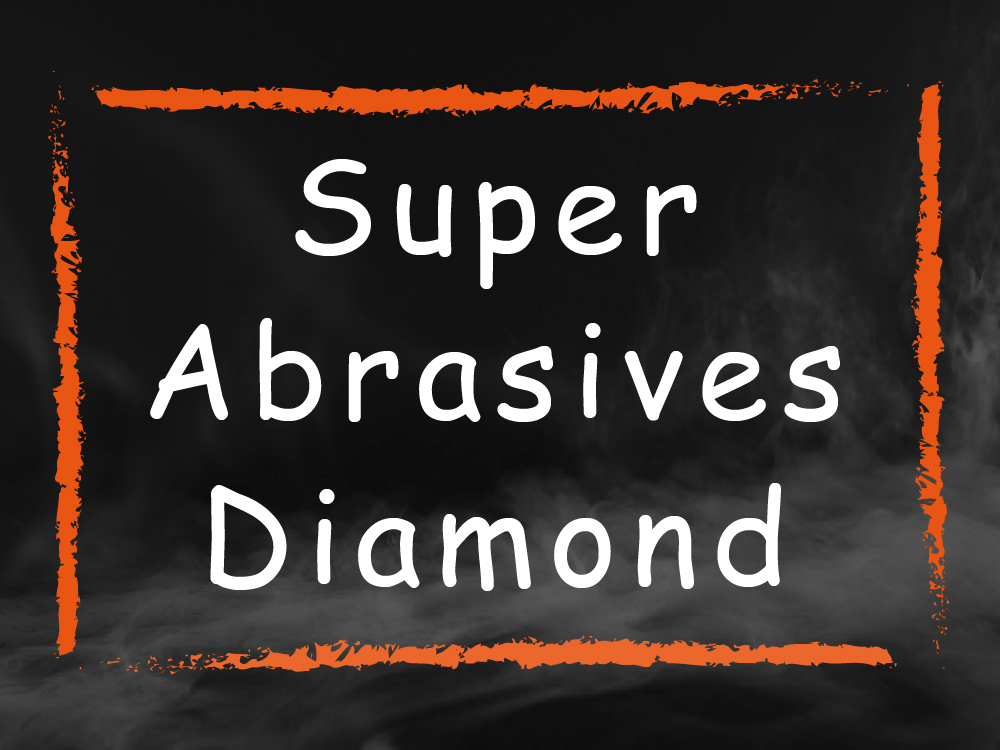
Abrasives-Super Abrasive Diamond
Looking at history, humans have used some natural materials as grinding abrasives, such as quartz, beach sand, gravel, walnut shells, and more. When we talk about artificial abrasives, we mainly refer to materials that are produced through artificial means rather than being mined from the Earth.
Some naturally occurring abrasives can also be produced artificially (such as aluminum oxide and diamonds), making it difficult to draw a clear line between these two categories. Widely used natural abrasives include garnet, cerium oxide, flint, emery, aluminum oxide, and diamonds. These materials may have different characteristics and chemical compositions depending on their specific geological sources. When produced artificially, they tend to have more consistent and stable chemical compositions and usage properties.
Super Abrasive: Diamond
Compared to the hardness of traditional abrasives, diamonds are also used as abrasives. Diamond has a Mohs hardness of 7,000, which is much higher than that of aluminum oxide and silicon carbide, making it more effective for processing hard materials. The earliest diamonds were obtained through mining. Natural diamonds can be classified based on their shape, color, and transparency, with the most perfect and flawless diamonds used for decorative gemstones, the next grade employed for industrial diamond tools, and the most common ones used as abrasive grit. In addition to naturally mined diamonds, many synthetic diamonds are also used in industry. Common methods of production include high-pressure high-temperature (HPHT) and chemical vapor deposition (CVD), with explosive methods being less commonly used.
1、High Pressure & HTHP-High Temperature
Using a four-sided press or a six-sided press, graphite (which, like diamond, is composed of carbon) and a catalyst (iron, cobalt, nickel) are subjected to compression under conditions of 70,000 atmospheres of pressure and temperatures exceeding 1500 degrees. After several hours of compression, they transform into diamonds. Due to the relatively lower production costs, this method is widely used in the production of abrasives.
2、CVD-Chemical Vapor Deposition
CVD, or Chemical Vapor Deposition, is a method used to grow diamonds using a mixture of hydrocarbon gases, typically methane. This process allows for the growth of diamonds with higher purity. In the synthesis chamber of CVD, methane gas is introduced, and microwave plasma or arc discharge is applied. By utilizing the principle of ionization to generate charged ions, methane releases highly reactive carbon-free radicals. These radicals attach and grow on diamond seed crystals on a growth substrate, usually made of silicon dioxide. The higher the purity of the diamond seed crystals, the better the quality of the grown diamonds. CVD-grown diamonds are often used in diamond tooling and cutting applications.
Since diamond is so hard, why not use diamonds to grind all materials? There are several reasons:
(1) Poor Heat Resistance of Diamond
Diamond, when exposed to air, starts to graphitize at around 700 degrees Celsius. This graphitization on the surface of the diamond can further react with oxygen in the air at high temperatures, converting into carbon monoxide and carbon dioxide. When subjected to temperatures around 900 degrees Celsius, diamond almost completely disappears. Larger surface area diamond particles are particularly prone to burning up, so precise control of grinding temperatures is crucial when using diamond grinding wheels. Momentary spikes in grinding temperatures can significantly reduce the lifespan of diamond tools.
(2) Reverse Catalysis in Synthetic Diamonds
When diamond is used to grind iron-based metals, the presence of iron, which is a catalyst in the synthetic diamond formation process, can easily lead to elevated grinding temperatures during the grinding process. This sustained contact with iron can induce reverse catalysis, causing the diamond to revert to graphite.
